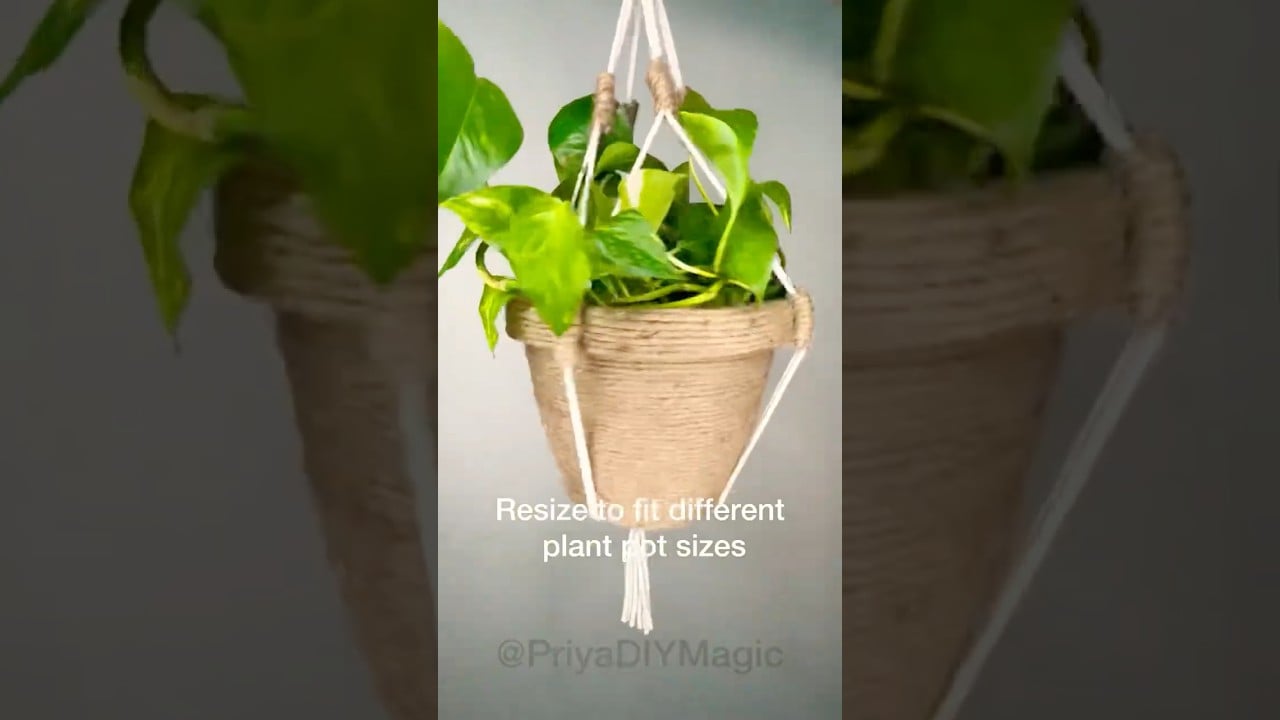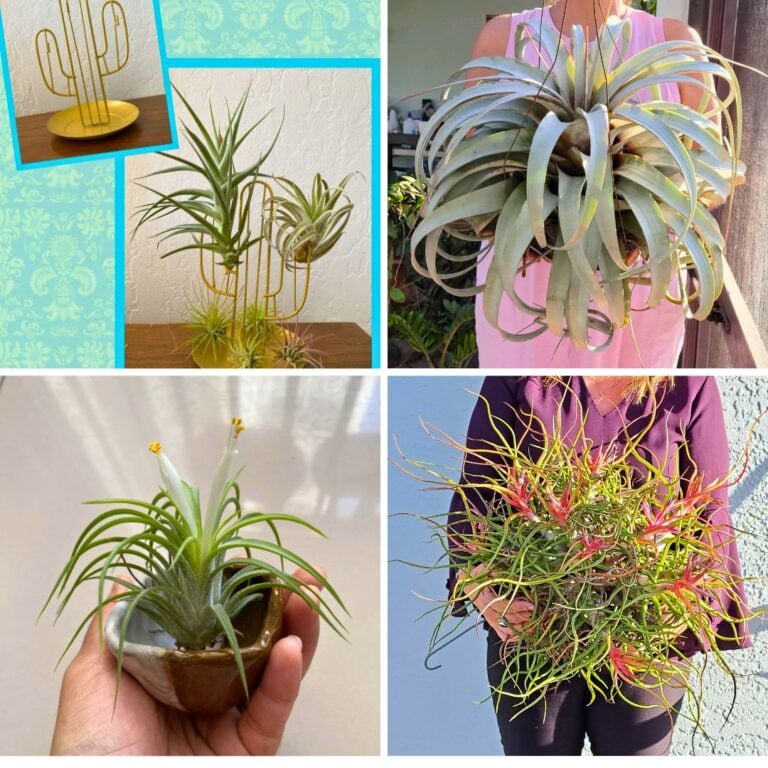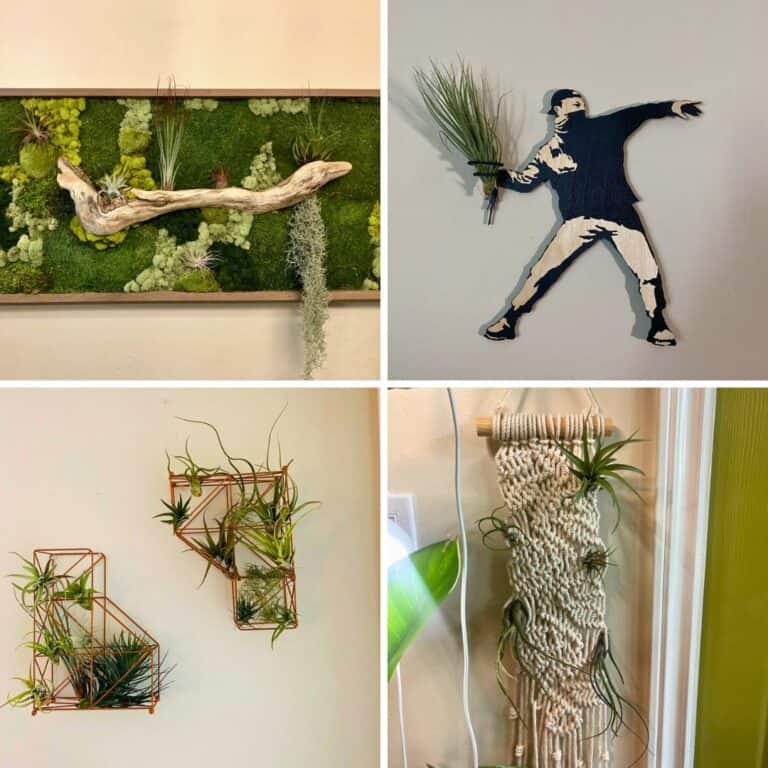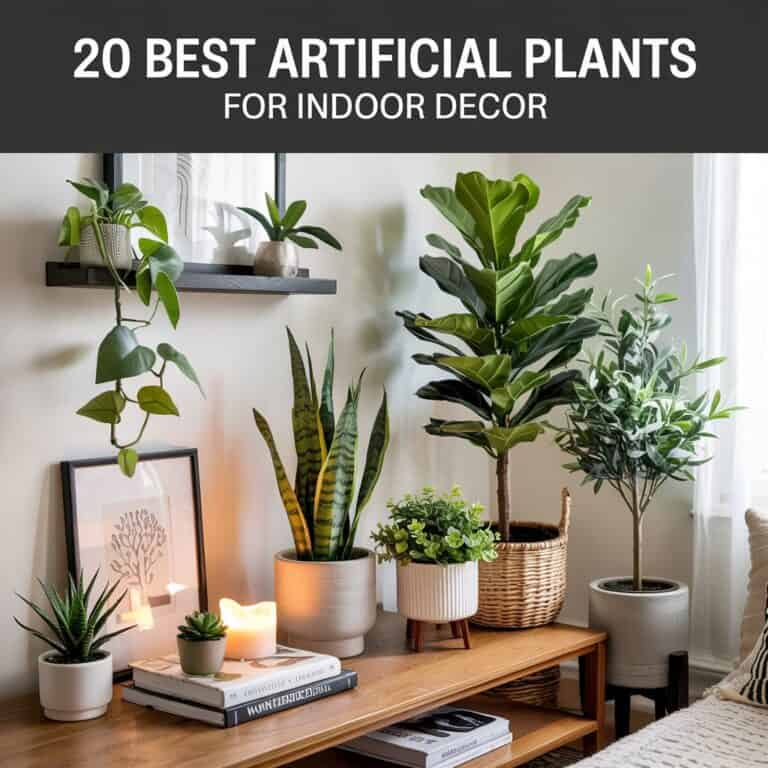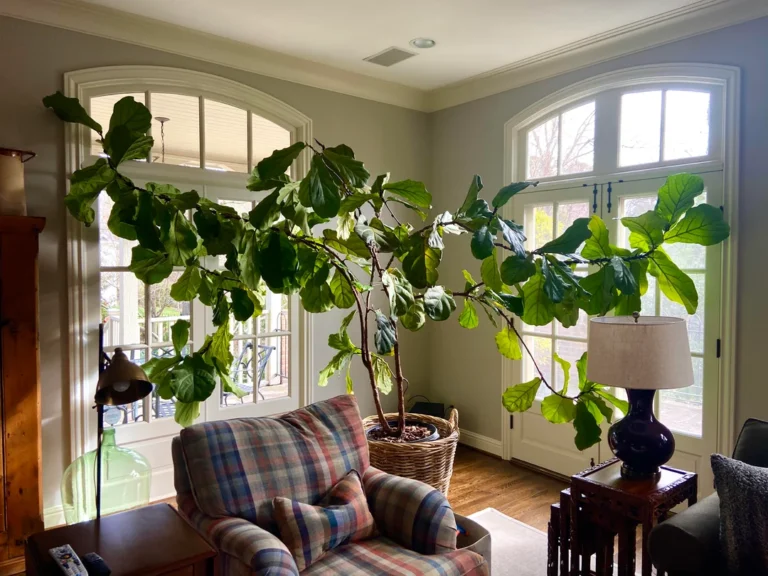5 Hanging Plant Hacks for Summer Windows
Summer sunlight turns my windows into the best spot for hanging plants. There’s just something about a splash of green that makes a room feel alive and a little more like the outdoors.
These simple hacks help me keep my hanging plants healthy and looking great all season long. Hanging plants can really thrive with a few easy tricks, even during those blazing hot months.
Please note: Simplify Plants is reader-supported. As an Amazon Associate, I earn from qualifying purchases made by our readers with no extra cost added to you all! Some links in the post are affiliate links and I get a commission from purchases made through links in the post.
1) Choose lightweight macrame hangers for easy installation

I always go for lightweight macrame hangers when hanging plants in my windows. They’re easy to handle and don’t put much strain on curtain rods or ceiling hooks.
With lightweight hangers, I don’t worry about damaging anything. Most are made from cotton or other soft materials, so they’re gentle on surfaces.
Macrame hangers come in all sorts of colors and styles. I love the cozy, natural vibe they give a room.
They hold most small and medium pots just fine. When I want to change things up, it’s easy to unhook the hanger and swap in a new plant.
It saves me time and keeps things interesting. I usually find these hangers at garden shops or online, and they don’t cost much.
No special tools needed—just a hook or a rod. If I’m not sure about weight, I check the label.
Most macrame hangers list a weight limit. That way, I’m not overloading my hook or window frame.
Using lightweight macrame hangers makes hanging plants simple and safe. It’s one less thing to stress about, so I can just enjoy my plants.
2) Use suction cup hooks designed for glass to avoid drilling

I love hanging plants in my window, but drilling holes everywhere? No thanks. Suction cup hooks are a lifesaver.
They stick right onto the glass—no tools, no mess. I just clean the window, press the hook on, and I’m set.
These hooks are made for lightweight plants like pothos, ivy, or spider plants. I always check the weight limit, just to be safe.
If my plant’s a bit heavy, I grab a bigger suction cup. Some can hold a few pounds, which is pretty impressive.
It’s fun to rearrange my plants whenever I want a new look. When it’s time to move them, I pull the tab and the hook pops right off.
No sticky residue, no holes—perfect if you rent or just like to switch things up. I like that the hooks are almost invisible, so the focus stays on the plants.
Glass stays clean and bright, too. If I want to clean the hooks, I just wash and reuse them.
It’s a super budget-friendly way to hang plants without any hassle.
3) Place trailing plants like English ivy for a cascading effect

I’m a big fan of trailing plants in my windows, especially when summer rolls around. English ivy is a favorite of mine—it sends out long, leafy vines that spill down like a green waterfall.
It’s easy to care for, just needs some water and indirect sunlight. I usually hang my ivy near windows that get gentle light.
Trailing plants like this make windows look so much more lively. The stems drape over the pot, giving everything a softer, more relaxed vibe.
I trim my ivy now and then to keep it healthy. If the vines get wild, I just snip them back a bit.
That way it stays neat, but still gives that lush, cascading look. Hanging ivy frees up shelf and floor space, too.
It’s a simple way to brighten a window without clutter. I just wipe the leaves occasionally to keep them shiny and dust-free.
That helps them soak up light and look their best. Sometimes I’ll mix English ivy with other trailing plants for variety.
It makes each window a little different. But honestly, even on its own, ivy is a great pick for a dramatic, low-effort display.
4) Install a tension rod for adjustable hanging heights

It’s hard to beat the simplicity of a tension rod for hanging plants. No tools, no drilling—just twist it to fit your window frame and you’re ready to go.
I can hang several lightweight plants right in front of the glass. Adjusting the rod higher or lower is easy, so I can make sure each plant gets enough sunlight.
If I want to move my plants up or down, I just adjust the rod as needed. It’s handy when I bring in a new plant, or when the sun shifts during the season.
A tension rod is budget-friendly and easy to find at any home store. Most are strong enough for small or medium plants, especially if I use lightweight pots.
Watering is a breeze—I can slide the pots along the rod or take them down quickly. And if I need to open the window wide, I can just remove everything in seconds.
I always double-check the weight limits, just in case. Tension rods make plant care flexible and simple— honestly, they’re a game-changer for sunny windows.
5) Incorporate colorful pots to brighten window space

I can’t resist colorful pots for my hanging plants. They make my window space feel cheerful and full of personality.
Bold colors like red, yellow, or blue really pop. Even soft pastels can add a fresh, light look—I like to mix and match for extra fun.
Sometimes I’ll go for painted patterns or quirky shapes. Stripes or polka dots? Why not.
Colorful pots stand out against green leaves. They draw the eye and make the window area feel warm.
When sunlight hits, the colors glow even more. I try to pick colors that match or contrast with my room.
If my space is mostly cool tones, I’ll either stick with that or go bold with something totally different. Lightweight plastic pots are great for hanging—they’re easy to move and come in every color.
Clay and ceramic look lovely but can be heavy, so I make sure my hooks are up to the task. Sometimes I swap pots with the seasons.
Brighter shades in summer, deeper colors in fall—changing pots is such an easy way to update the space. I always look for drainage holes to keep my plants happy.
If a pot doesn’t have one, I toss some stones in the bottom for drainage. Using colorful pots makes my hanging plants and windows pop, and honestly, it just makes plant care more fun.
How Lighting Impacts Hanging Plants
I’ve noticed that where I hang my plants totally changes how they grow. Some windows get tons of light, others are shady, and a few are way too hot.
Matching Plant Types to Window Directions

Window direction makes a huge difference in sunlight. Here’s a quick cheat sheet:
| Window Direction | Amount of Sunlight | Best Plant Types |
|---|---|---|
| North | Low, gentle light | Pothos, ferns, snake plant |
| East | Bright, morning light | Spider plant, peperomia |
| South | Strong, direct light | Succulents, cacti |
| West | Hot, afternoon sun | Philodendron, hoyas |
If I put a fern in a south window, it’s toast. But succulents? They love the heat.
I always try to match a plant’s sunlight needs to the right spot.
Tips for Preventing Sunburn and Overheating
Too much sun can burn leaves—I’ve seen crispy brown patches more than once. If that happens, I move the plant back from the window or hang a sheer curtain to soften the light.
I touch the soil often. If it’s dry or warm, I’ll water a bit more and sometimes mist the leaves to cool things down.
For baskets near hot windows, I only water early in the morning or at night. That way, my plants don’t get steamed in the midday heat.
Good airflow is key, too. I don’t want things getting too damp or sticky.
Watching leaf color and feeling the pot helps me know if they’re happy or stressed.
Watering and Humidity for Summer Windows

Hot, sunny windows dry out hanging plants way faster than I expect. Keeping moisture steady is honestly half the battle for healthy plants.
Dealing With Increased Summer Evaporation
Summer sun through the glass means my plant’s soil dries out super quickly. I check my hanging plants every day—just stick a finger about an inch in.
If it’s dry, I water right away. I use a squeeze bottle or small watering can to target the soil and avoid wetting the leaves.
That really helps prevent mildew or spots. Here’s what works best for me:
| Time of Day | Reason |
|---|---|
| Morning | Soil soaks water slowly. |
| Evening | Less evaporation risk. |
Tip: I always pick pots with drainage holes. Soggy roots are a nightmare.
Using Pebble Trays to Maintain Moisture
Summer air near my windows gets really dry. A simple tray of pebbles under my plants helps raise humidity.
I just fill a shallow tray with pebbles, pour in water until it almost covers the stones, and set the pot on top. The pot sits on the stones, not in the water.
As the water evaporates, it creates a little bubble of moist air. This helps stop leaves from turning brown or crispy.
I top up the water often, especially on hot days. Pebble trays are cheap, easy, and honestly, kind of a no-brainer.
I use them for ferns, spider plants, and pothos—pretty much anything that likes a bit more humidity.
Frequently Asked Questions
I love making my window spaces more vibrant with easy plant hanging ideas. I use simple tools, lightweight hangers, and creative tricks to keep installation quick and damage-free.
What are some creative ways to display hanging plants by the window?
I use macrame hangers with bright pots for a cheerful touch.
I also like hanging plants at different heights to create visual interest. Trailing plants, such as English ivy, help add a lovely, cascading look.
Can I use a tension rod to hang plants in front of my window?
Absolutely, I can set up a tension rod between the sides of my window frame.
That way, I can move plants around or adjust their heights whenever I feel like it. As long as I stick with lightweight planters or smaller plants, the rod should hold up just fine.
How can I hang plants on my windows without using a drill?
I usually grab suction cup hooks designed for glass—these let me hang plants right on the window, and there’s no mess or holes to worry about.
Sometimes, I’ll use Command hooks too if I want to attach something to the window frame or another flat surface.
Are there any DIY window plant hanger projects that are easy to do?
I’ve made simple macrame hangers with just some rope and a handful of knots.
Honestly, reusing old belts or scarves as straps works in a pinch. Every now and then, I’ll paint a planter or wrap it in bright fabric, just to mix things up.
What should I consider when choosing plants for my outdoor window space?
I always try to pick plants that fit the amount of sunlight the window gets.
If it’s a sunny spot, I’ll usually go for succulents or petunias. For shady areas, I lean toward ferns or impatiens.
And hey, drainage is non-negotiable—I make sure every pot has it, or those roots are going to be miserable.
How can I use Ikea rods or similar products to create an indoor garden by the window?
I usually mount Ikea curtain rods—or honestly, any strong bar—just above my window.
After that, I like to hang lightweight pots from the rod using S-hooks or little hangers. It’s actually kind of fun to swap things around whenever the mood strikes, and it really makes the most out of that sunny window space.
Recommended Garden Supplies
| Product Image | Our Recommended Gardening Supplies | Check Offers! |
|---|---|---|
Top Top
Top
Top
Top
Top
Top
Top
Top | rePotme Houseplant and Tropical Classic Potting Soil Mix | Check Offer On Amazon |
 Top
Top
Top
Top
Top
Top
Top
Top | Espoma Organic Indoor Plant Food | Check Offer On Amazon |
 Top
Top
Top
Top
Top
Top
Top
Top | GooingTop LED Grow Light 6000K Full Spectrum Clip Plant Growing Lamp | Check Offer On Amazon |
 Top
Top
Top
Top
Top
Top
Top
Top | Soil Moisture Meter | Check Offer On Amazon |
 Top
Top
Top
Top
Top
Top
Top
Top | Govee Hygrometer Thermometer, Bluetooth Enabled! | Check Offer On Amazon |
 Top
Top | LEVOIT Humidifiers for Large Room(Best For Plants) | Check Offer On Amazon |
 Top
Top
Top
Top
Top
Top
Top
Top | Upgraded DIY Automatic Drip Irrigation Kit, 15 Potted Houseplants Support | Check Offer On Amazon |
 Top
Top
Top
Top
Top
Top
Top
Top | Stainless Steel Heavy Duty Gardening Tool Set | Check Offer On Amazon |
 Top
Top
Top
Top
Top
Top
Top
Top | Bonide Insecticidal Soap | Check Offer On Amazon |
 Top
Top
Top
Top
Top
Top
Top
Top | Bonide 32 oz Spray Neem Oil for Organic Gardening | Check Offer On Amazon |
 Top
Top
Top
Top
Top
Top
Top
Top | Garden Safe Fungicide | Check Offer On Amazon |

